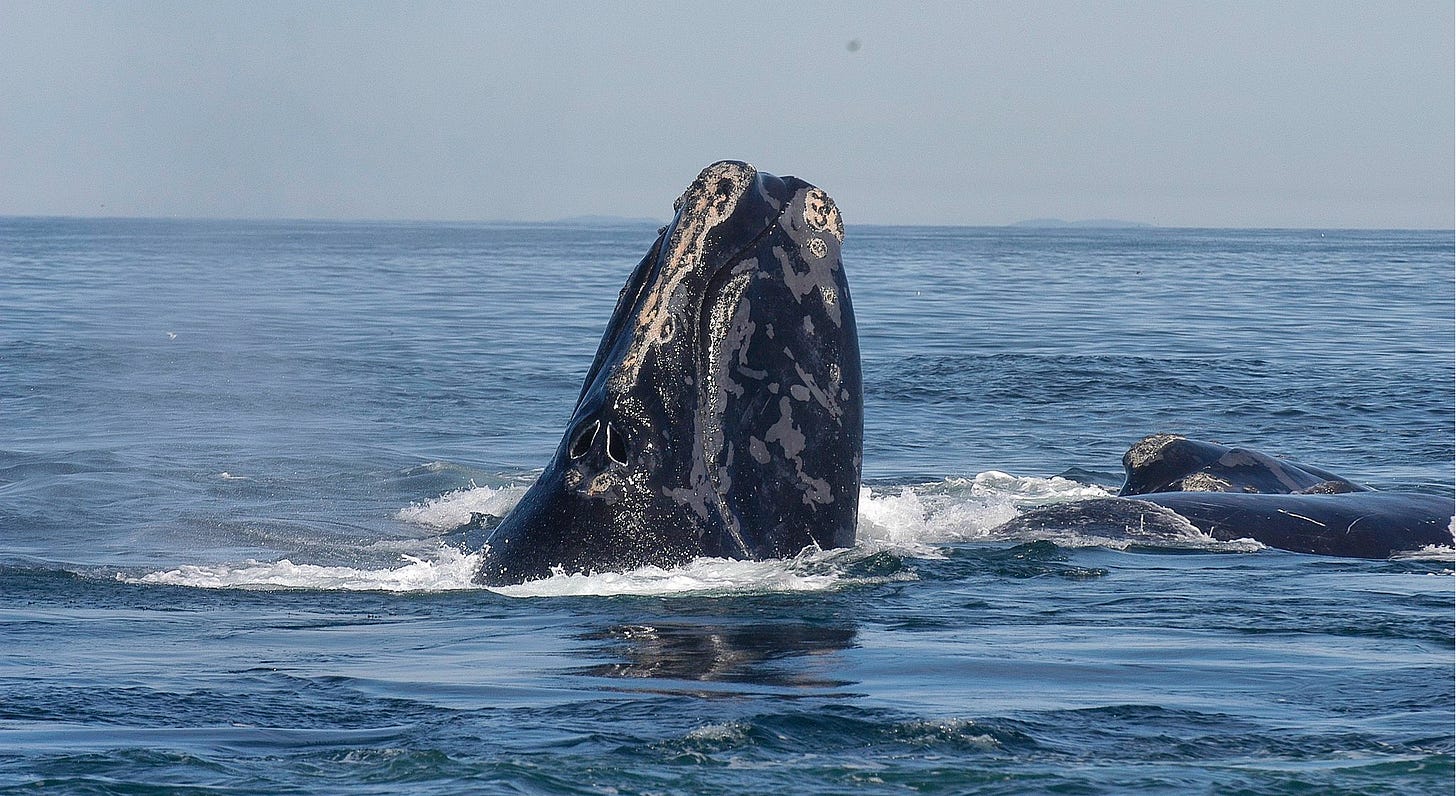2021 was a better calving season for the North Atlantic right whales
The North Atlantic right whales suffer from vessel strikes and entanglements in fishing gear at such a rate that the deaths of the whales may be outnumbering their reproduction numbers.

This year, the critically endangered North Atlantic right whales had the highest number of births since 2015. Researchers identified 19 live calves, which is positive news compared to the meager number of only 22 births observed during the previous four calving seasons combined.
This number is hopeful news, and the number of 19 gets close to the 24 four that researchers hope for, which could stabilize the species and let it grow. But the long-term trend is deeply worrying.
It is the week of Thanksgiving, and this is your chance to become a supporter of this newsletter (or give it to a friend or family member). Only until the evening of Black Friday can you make use of a 20 percent discount for 12 months; it brings the cost of a subscription down to only 13 dollar cents per day.
Less than 400 right whales left
Those 22 births are about a third of the previous four-year average annual birth rate for right whales; the population has declined for the past decade. Worldwide, there are less than 400 of these whales left. Scientists raised the alarm three years ago when they found that not one of the whales had produced any offspring at all; it was the first time in 30 years that this happened.
Each fall, some right whales travel more than 1,000 miles from their feeding areas in the waters of New England and Canada to the shallow, coastal waters of North Carolina, South Carolina, Georgia, and northeastern Florida. Researchers also go there each year to closely monitor the southeastern United States for new offspring during the calving season. It is the only known area where these right whale females regularly give birth and nurse their young.
Entanglements in fishing gear and vessel strikes
The North Atlantic right whales suffer from vessel strikes and entanglements in fishing gear at such a rate that the deaths of the whales may be outnumbering their reproduction numbers. The numbers seem to confirm this; fewer breeding females produce fewer calves each year, which also prevents the species from recovering. Researchers estimate there are fewer than 100 reproductively active North Atlantic right whale females remaining.
The news of the higher number of births was one of the news items in Week 13 of this year, the last days of March, and the first days of April. I mention it here since we are looking back at 2021 in big steps of one week per day.
Meanwhile in Ontario
Since I arrived in Ottawa in November, I had never set foot in a cafe or restaurant due to covid restrictions (and neither could I visit a hairdresser ;-). So it was only in Week 13 that I ordered my first cup of coffee in a cafe, with the request to drink it outside and in a not environment-friendly north-American size throw-away cup.
I always like this spot where you see the reflections of the parliament buildings in Ottawa. This street is also about 5 km from home and is often a turnaround point when running this route that passes well-known sites of Ottawa. (I may write about that someday).
And I visited Brockville, Ontario.
I write this newsletter because I believe that together we can do better on this beautiful but fragile planet.
This newsletter is and will remain an independent production. Accordingly, I have never accepted any advertising offers. I also aim to make as many editions as possible available for free.
Support from those who can afford it makes this independent newsletter available to all. You can join this initiative by taking a paid subscription.
If the cost of this newsletter ($4.80/month, $48/year for the first year) would create any financial strain, please stay on the free list; I value all readers.
This is what I wrote on April 4 this year, after I had visited the peatlands of Mer Bleue in the early morning:
Notes:
https://www.theguardian.com/environment/2021/apr/03/north-atlantic-right-whales-most-calves-since-2015
https://en.wikipedia.org/wiki/North_Atlantic_right_whale
First photo: Moira Brown and New England Aquarium, Attribution, via Wikimedia Commons
Second photo: Eubalaena glacialis with calf Public Domain, https://commons.wikimedia.org/w/index.php?curid=741392









